Repair help
Kenmore Washers Troubleshooting: 5 Common Problems & How to Fix
AZparts Team
Updated on June 24, 2025
7 min read
Kenmore washers are built to last and widely trusted for their reliability and efficiency. However, like any appliance used frequently, they can develop issues over time. From a washer that refuses to start to one that leaks or makes unusual noises, understanding the root causes is essential to fixing the problem quickly and effectively.
This guide offers a detailed look at Kenmore washers troubleshooting, covering the five most common issues, likely causes, and step-by-step instructions on how to diagnose and repair them. Whether you’re a DIY enthusiast or simply want to understand what’s wrong before calling a technician, this resource will help you get your Kenmore washer back in working order.

1. Kenmore Washer Won’t Start
When your Kenmore washer doesn't start, it may seem like the unit has failed entirely. However, in most cases, the cause is something relatively minor, such as a power interruption or a faulty door switch.
Possible Causes:
- Power supply issues: A tripped breaker, defective wall outlet, or an unplugged power cord may prevent the washer from powering on.
- Faulty lid switch (top-load models): The washer won’t start if the lid switch doesn’t detect that the lid is closed.
- Defective door lock (front-load models): If the door doesn’t lock properly, the washer won’t proceed to the next step in the cycle.
- Malfunctioning timer or control board: These components send signals to initiate cycles. If they’re damaged, the washer won't respond at all.
Troubleshooting Steps:
- Check the Power Connection
Ensure that the washer is firmly plugged in and that the outlet is functional. Test the outlet with another device to confirm it's working. Also, inspect the circuit breaker and reset it if necessary. - Test the Lid Switch (Top-Load Models)
Open and close the lid to listen for a clicking sound, which usually indicates a functioning switch. If there's no click, use a multimeter to test for continuity. Replace the switch if it's faulty. - Inspect the Door Lock Mechanism (Front-Load Models)
Make sure the door closes firmly and engages the locking mechanism. Use a multimeter to test the door lock assembly. A defective lock should be replaced. - Evaluate the Control Board and Timer
Look for signs of burning, corrosion, or loose connections on the control board. Test with a multimeter if needed. If the timer doesn’t respond or advance, it may also need to be replaced.
Solution: Replace any faulty component found during testing—whether it’s the lid switch, door lock, control board, or timer.
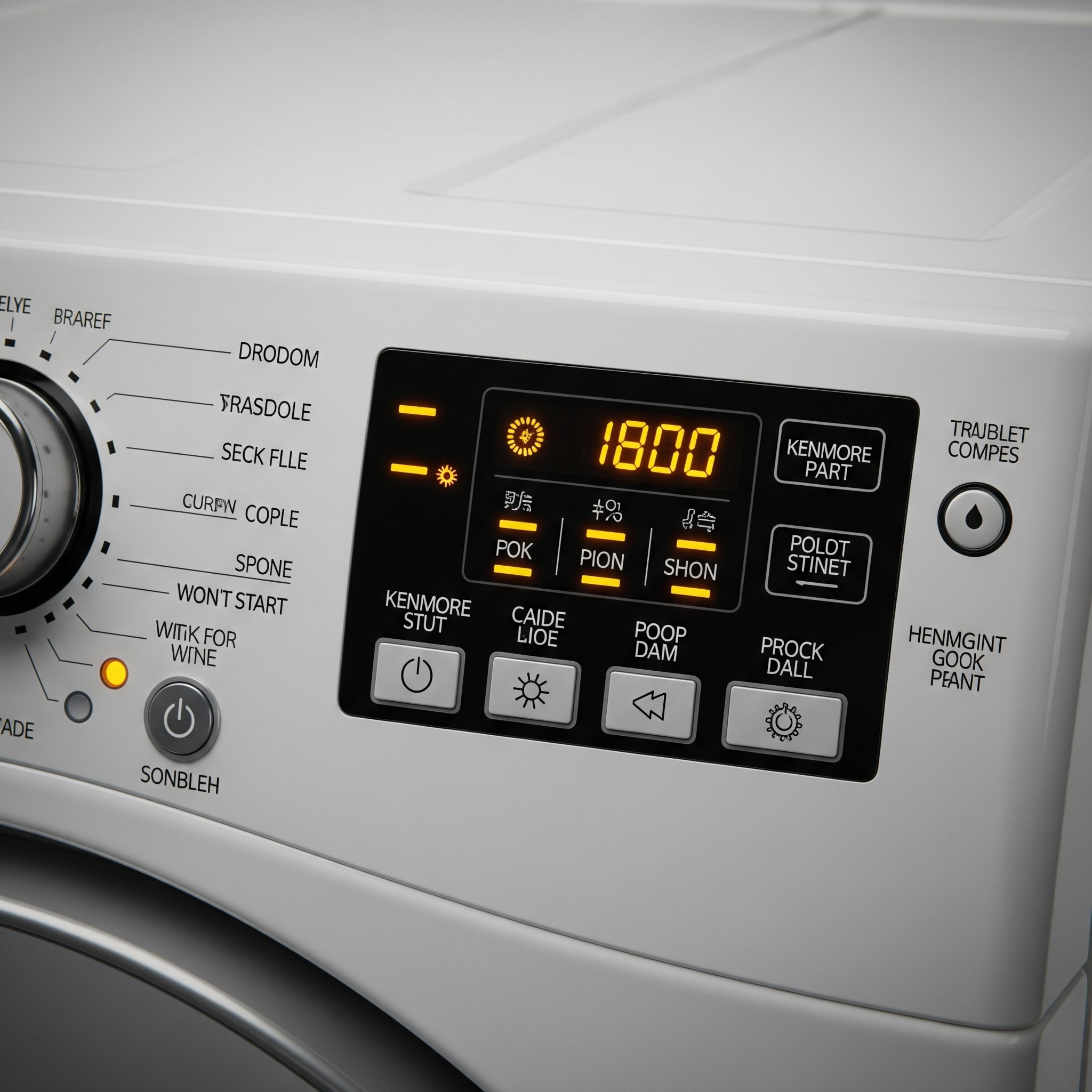
Check out more: Kenmore Washer No Power – Common Causes & Fixes
2. Kenmore Washer Won’t Drain
If water remains in the drum after a wash cycle, your washer likely has a drainage problem. This could stem from a blockage, a pump failure, or an issue with the lid or door switch.
Possible Causes:
- Clogged drain hose or pump filter: Items like lint, coins, or small articles of clothing can obstruct water flow.
- Defective drain pump: The pump may fail mechanically or electrically.
- Kinked or pinched drain hose: A sharp bend in the hose can prevent water from flowing freely.
- Lid switch or door lock failure: The washer won’t drain if it cannot confirm that the lid or door is closed.
Troubleshooting Steps:
- Inspect the Drain Hose
Disconnect the hose and check for obstructions. Straighten any kinks or bends that might restrict water flow. - Clean the Drain Pump Filter (Front-Load Models)
Access the drain filter, usually located behind the lower front panel. Place a towel underneath, open the filter, and remove any debris. - Test the Drain Pump
Listen for humming or buzzing during the drain cycle. If the pump makes noise but doesn't drain, or if it’s silent, it may be defective. Test with a multimeter for continuity. - Check the Lid Switch or Door Lock
If the washer thinks the lid or door is open, it won’t initiate draining. Test for continuity and replace the component if it's not functioning.
Solution: Clean any blockages and replace the pump or switch if it fails continuity tests.
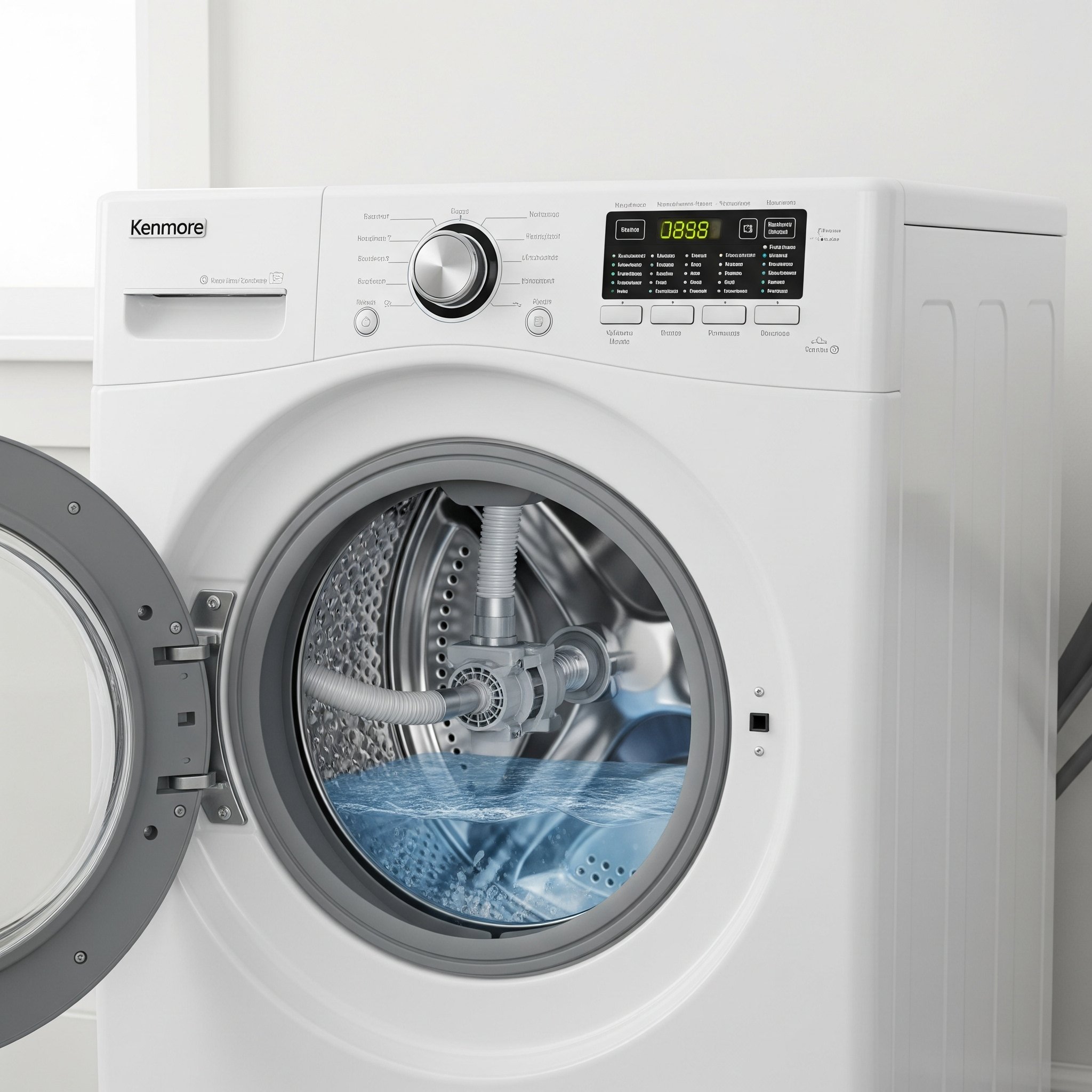
3. Kenmore Washer Won’t Spin or Spins Slowly
A washer that doesn’t spin or spins too slowly may leave clothes soaking wet. This is usually caused by mechanical issues or an imbalance in the load.
Possible Causes:
- Unbalanced load: Too few or too many clothes can prevent proper spinning.
- Worn drive belt: A loose or broken belt can’t turn the drum effectively.
- Faulty motor coupling (top-load models): This part connects the motor to the transmission. If it’s broken, the washer can’t spin.
- Defective lid switch or door lock: The washer may pause or skip spinning if these parts don’t engage correctly.
Troubleshooting Steps:
- Redistribute the Load
Make sure clothing is evenly distributed. Try removing a few bulky items and restart the cycle. - Inspect the Drive Belt
Access the back of the washer and examine the drive belt. If it's frayed, stretched, or broken, it should be replaced. - Check the Motor Coupling (Top-Load Models)
This part may break under strain. If the washer motor runs but the drum doesn’t spin, inspect and replace the motor coupling. - Test the Lid Switch or Door Lock
As with draining issues, the washer must verify that the lid or door is closed before spinning. Test and replace the switch if needed.
Solution: Rebalance the load or replace mechanical components like the drive belt or motor coupling if they show signs of wear.
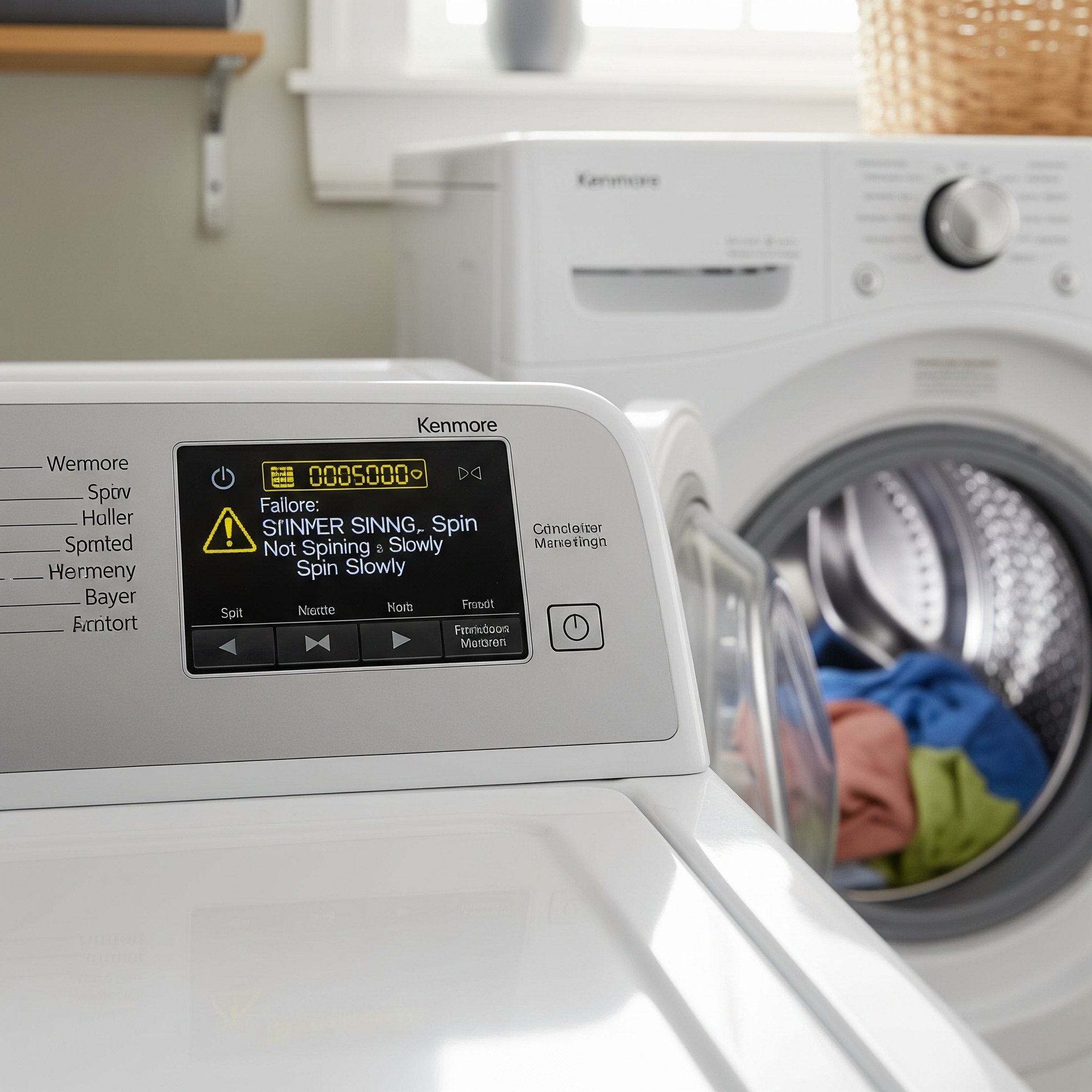
4. Kenmore Washer Is Leaking Water
Water leaks are not only inconvenient but can damage your floors and walls. Leaks are often caused by loose connections or worn-out seals and valves.
Possible Causes:
- Loose or cracked hoses: Fill and drain hoses may become worn or detached.
- Faulty water inlet valve: This valve controls water entry and can leak if damaged.
- Worn door seal (front-load models): A cracked rubber gasket will allow water to escape during cycles.
Troubleshooting Steps:
- Inspect All Hoses
Examine both inlet and drain hoses for signs of wear, holes, or poor connections. Tighten or replace them as needed. - Test the Water Inlet Valve
Use a multimeter to check for continuity. Also, look for any signs of leaking around the valve area. Replace if necessary. - Examine the Door Seal
Open the door and check for cracks, mold, or tears in the gasket. If water is leaking from the door, the seal should be replaced.
Solution: Replace damaged hoses, inlet valves, or door gaskets to eliminate leaks and restore full function.
5. Kenmore Washer Makes Loud Noises
Loud banging, grinding, or squealing noises can indicate that internal parts are worn or broken. Ignoring these sounds can lead to more expensive damage.
Possible Causes:
- Worn drum bearings: These support the tub and allow it to spin smoothly. When they wear out, you'll hear a grinding sound.
- Damaged shock absorbers or suspension springs: These parts dampen the movement of the washer. If broken, they can cause excessive vibration and noise.
- Foreign objects: Coins, buttons, or other debris can get stuck in the drum or pump.
Troubleshooting Steps:
- Check for Foreign Objects
Carefully inspect the drum and filter areas. Remove any loose items. - Test the Drum Bearings
Rotate the drum by hand. If you feel roughness or hear grinding, the bearings are likely worn and should be replaced. Note: This can be a labor-intensive repair. - Inspect the Suspension System
On front-load models, check the shock absorbers. On top-loaders, inspect the suspension springs. Replace any that are broken or stretched.
Solution: Remove debris and replace internal suspension or bearing components as needed to eliminate noise.
Preventative Maintenance Tips for Kenmore Washers
Regular maintenance can help you avoid costly repairs and keep your washer in top shape:
- Clean the drain pump filter every 6 months.
- Inspect and tighten inlet and drain hoses regularly.
- Only use HE (High-Efficiency) detergent to avoid buildup.
- Avoid overloading the washer, which stresses the drum and suspension system.
- Ensure the machine is level to prevent excessive vibration.
Get Trusted Kenmore Washer Replacement Parts
Troubleshooting is only half the job—having the right parts is what makes a successful repair. That’s why AZParts, a trusted supplier of replacement parts, offers a comprehensive range of Kenmore washer components or other Kenmore parts:
- Lid switches, door locks, and control boards
- Drain pumps, belts, and motor couplings
- Water inlet valves, door seals, and hoses
Every our part is tested for quality, compatibility, and performance. Each order includes detailed fitment guides and warranty support to help you install with confidence.
Shop now at AZParts for fast shipping and expert service. Whether you’re replacing a simple switch or rebuilding your washer's suspension, we have the parts you can count on.
Check if there are any other problems with your Kenmore dryers:
1. Kenmore Elite Washer No Power – Common Causes & Fixes
2. Why is my kenmore dryer not drying? Causes & Solutions
Washer
Further Reading
Further Reading

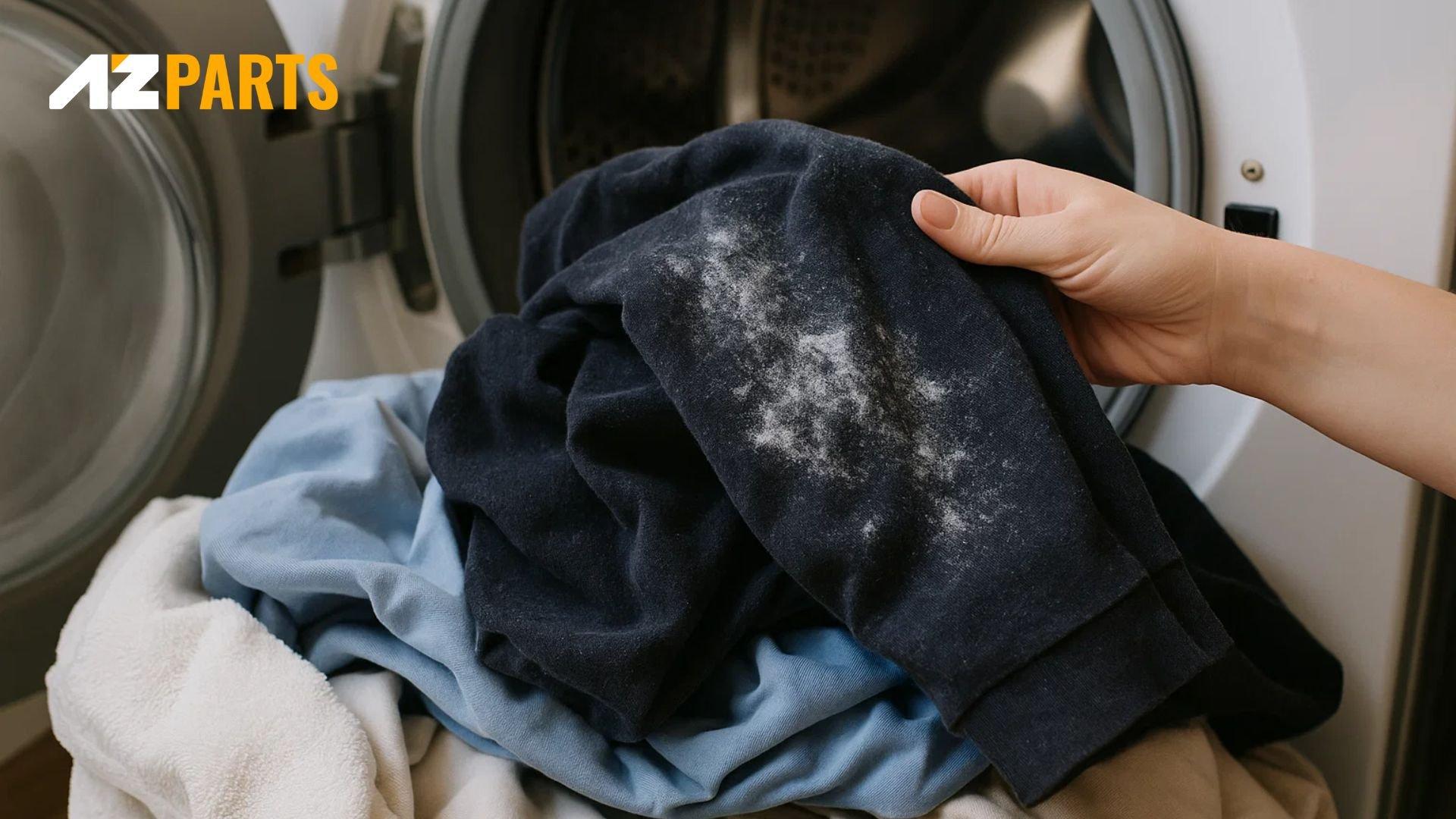

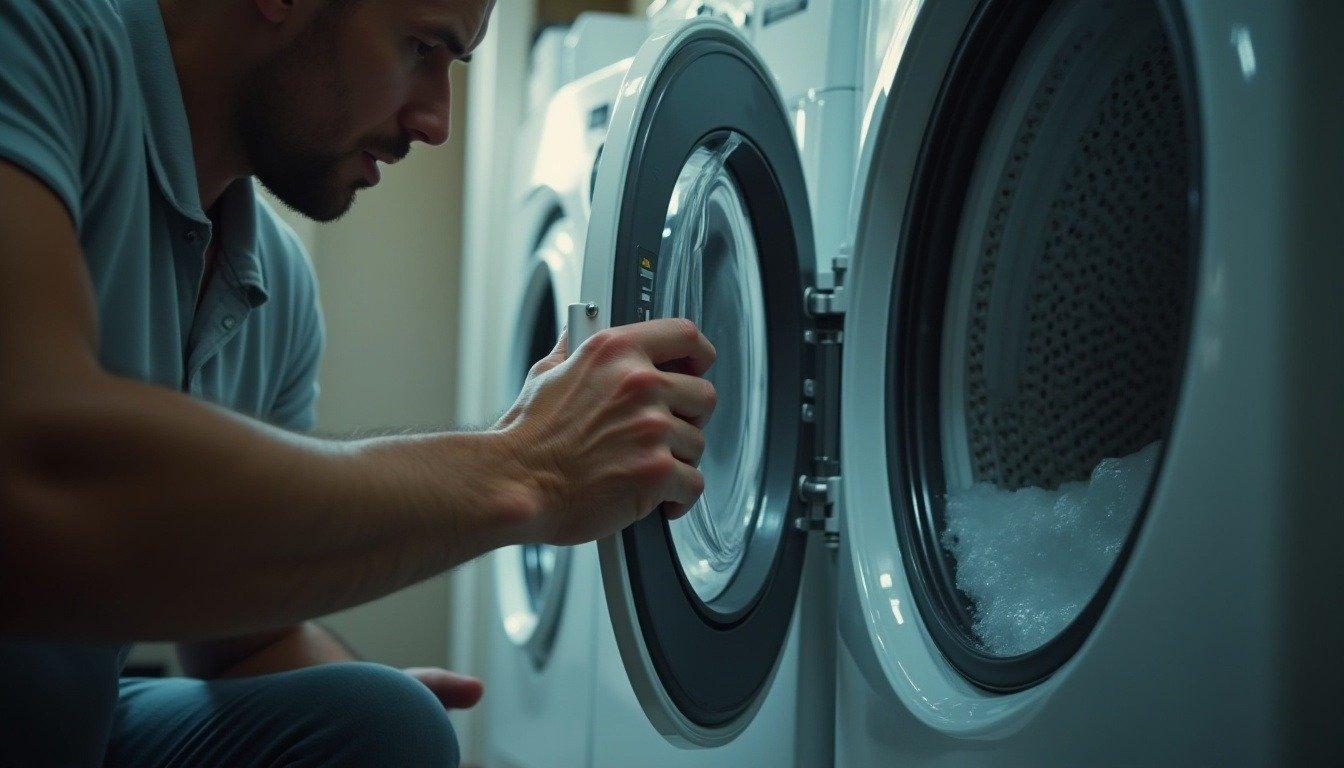

_1748341252.jpg&w=3840&q=75)